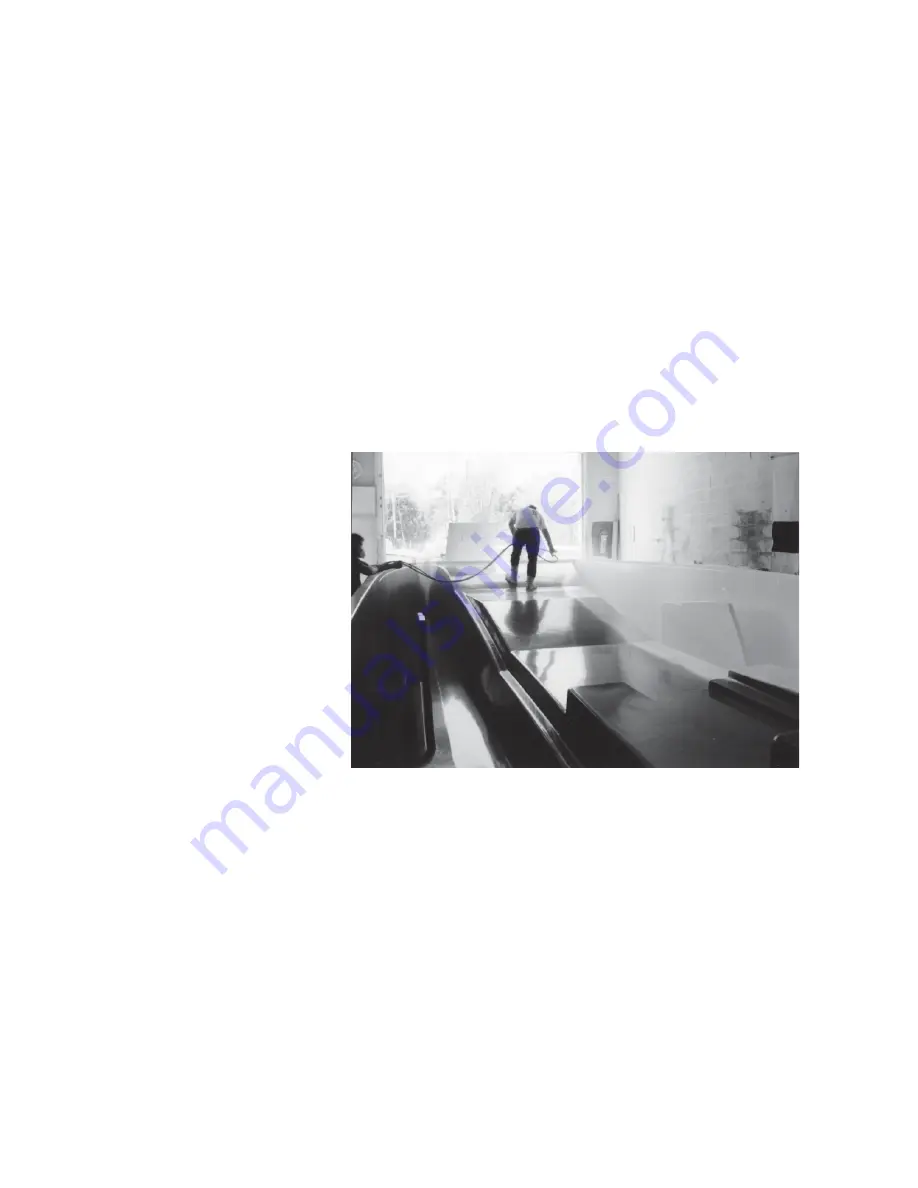
Gemini 105Mc Owner’s Manual
31
Copyright © 2004 Performance Cruising Inc.
How Gemini’s Construction Differs from a Monohull
A 34’ monohull has a hull area of 350 square feet and a deck area of 250 square feet. Gemini's hull area is 770
square feet and the deck is 600 square ft. The monohull has only one bow and transom and is normally
glassed in a mold that can be tipped for easier rolling out of the fiberglass. With a tipped mold, gravity helps
hold the fiberglass to the now horizontal hull side, and the excess resin can easily be squeezed out. The
whole main lay-up of a monohull is quicker to apply reducing the places where the fiberglass hardens that can
cause air blisters as additional fiberglass is applied over the ridge.
Gemini's hull mold is comparatively huge and cannot be tipped. Not only are there two bows, two transoms,
two centerboard cases, and two rudder cases, but also a bridge deck with many corners. The problems associ-
ated with a large, non-tipping mold are that the hull sides are molded vertically making it difficult to apply a
good quantity of resin without it running down the hull sides into the keel. This excess resin is difficult to
remove. Reaching all the places on the bridge deck and around the keels and rudders without air voids and
obtaining a perfect resin\glass ratio is difficult.
The deck is large and it would be difficult to apply two-tone gelcoat. Gemini's deck has a large non-skid pat-
tern molded in. This pattern not only gives a good non-skid surface but also because of the shadows and tex-
ture does the same job as adding another color to the deck.
The molds to build Gemini are also three times more expensive than a monohull of the same size. The extra
surface area of Gemini means that if
Gemini is built with the same lay-up
as the monohull, then Gemini will
be a lot heavier than the monohull,
even with the keel on the monohull
taken into consideration. Fortu-
nately, Gemini does not have to be
strong enough to take the high point
loads of a keel, so can be of lighter
construction. However, the lighter
construction and large surface area
as well as the flexible nature of the
fiberglass make the deck difficult to
handle during construction.
A monohull is normally built with
most of the interior fitted out be-
fore the deck is put on. The deck is
also trimmed out with the various
fittings installed before it is bonded
to the hull. Gemini with large light
moldings has to be bonded together first to stabilize the shape. The hull must have numerous interior mold-
ings and bulkheads bonded in before it is released from the mold. This also slows down the process. The un-
bonded deck is so flexible that it is left in the mold while the entire mold and deck are turned over, then
placed in position over the hull and released. Once the hull and deck are bonded together then the boat is
ready for the assembly shop. Unfortunately, the whole boat has to be finished with workers carrying every-
thing through the main door.
The structure of Gemini is second to none. Any cosmetic problems such as small blisters or stress cracks
could be solved with different manufacturing techniques but the structural integrity of the boat would be
compromised. For example the hulls could be molded separately like a monohull but then there would be a
suspect joint where the parts are joined. Cheap low aspect ratio keels could be bolted on reducing the cost
of centerboards and cases. Cheaper fixed rudders could be used. But those are compromises we are not will-
ing to make.
Construction






























